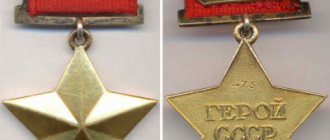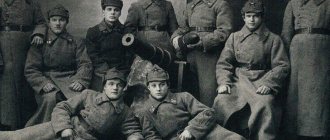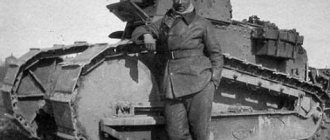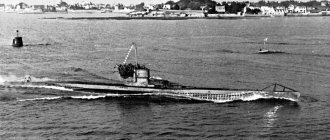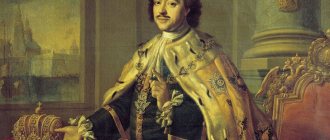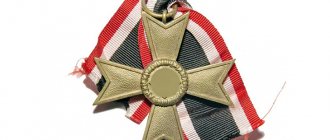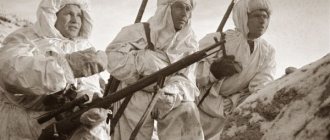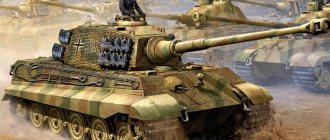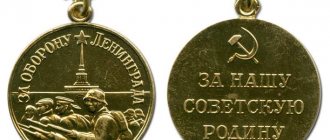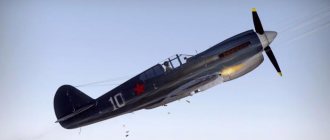Military orders and medals of the Soviet Union. Medal "Partisan of the Patriotic War"
Already in the first days and weeks of the Great Patriotic War, a real people's struggle against the invaders unfolded in the rear of the advancing fascist troops, in the territory temporarily occupied by them. The Council of People's Commissars of the USSR attached great importance to such a struggle, and already on June 29, 1941, a directive was issued that prescribed the organization of the partisan movement in the regions of the USSR occupied by German troops. During the Great Patriotic War, more than 6.2 thousand various partisan detachments and underground groups operated in the rear of Hitler’s troops, in which more than a million people fought against the invaders. The contribution of the partisans to the victory in the Great Patriotic War is enormous. To fight partisan detachments, the Germans were forced to divert units from the front, sometimes up to 10% of their regular troops, not counting police units. During the years of the Great Patriotic War, the partisans destroyed, wounded and captured more than 1 million enemy soldiers, they derailed more than 20 thousand enemy trains, destroyed 58 armored trains, blew up 12 thousand bridges, disabled more than 9 thousand kilometers of communication lines, making everything difficult life for the invaders.
For quite a long time, the partisans did not have their own award, however, understanding their contribution to the defeat of the Nazi troops, the USSR Armed Forces decided to establish the medal “Partisan of the Patriotic War”. The decree establishing this medal was signed on February 2, 1943. The medal had two degrees of distinction: first and second and was intended to reward Soviet partisans who distinguished themselves in the armed struggle deployed in the rear of Nazi troops.
Medal “Partisan of the Patriotic War”, 1st degree It is worth noting that the medal “Partisan of the Patriotic War” was the first medal in the Soviet Union that had two degrees at once. There were two such medals in total. In 1974, the USSR introduced the medal “For Distinction in Military Service.” The author of the drawing of the partisan medal was the artist N. I. Moskalev, who, when creating the award, used a drawing from an unrealized project - the planned medal “25 Years of the Soviet Army”.
The medal “Partisan of the Patriotic War”, 1st degree, was awarded to partisans, as well as the organizers of the partisan movement and the commanding staff of the detachments for special merits that were shown in organizing the partisan movement, for heroism, courage and outstanding successes in the fight for the independence of our Motherland during actions in the rear. Hitler's troops. The Second Class Partisan of the Patriotic War medal was awarded for personal combat distinction in carrying out tasks and orders from the command, for active assistance in the partisan struggle against the Nazi invaders.
The medal “Partisan of the Patriotic War” was a regular circle with a diameter of 32 mm. On the front side of the award there was a profile chest-to-chest image of I.V. Stalin and V.I. Lenin, turned to the left. Along the circumference of the medal, on a ribbon 4 mm wide, was the inscription “To the Partisan of the Patriotic War” (all capital letters). At the beginning and at the end of this inscription there were two small stars. At the bottom of the award there was a convex five-pointed star, in the center of which there was a hammer and sickle and the letters “USSR” on both sides, the letters were located on the folds of the ribbon running along the circumference of the medal. On the reverse side of the award there was the inscription “FOR OUR SOVIET MOTHERLAND” (all capital letters), the inscription was made in three lines, above the inscription at the top of the medal there was an image of a hammer and sickle. All images and inscriptions on the award were raised.
The medal “Partisan of the Patriotic War”, 1st degree, was made of 925 sterling silver. The mass of silver in the medal of the 1st degree was 20.792 g, the total weight of the award was 22.49 ± 1.42 g. The medal “Partisan of the Patriotic War” of the 2nd degree was completely similar to the first, but was made of brass. Using a ring and an eyelet, the medal was connected to a standard pentagonal block, which was covered with a light green moiré silk ribbon 24 mm wide. There was a longitudinal strip in the middle of the ribbon; for the first and second degree awards, the width of the strip was the same and equal to 2 mm, the difference was in the color of the strip. Grade I is red, grade II is blue.
Medal number 1 in June 1943 was awarded to the Soviet partisan E.I. Osipenko, commander of a demolition group, miner. In the fall of 1941, he took the post of chief of staff of the formed partisan detachment, which operated in the Kaluga region near the city of Sukhinichi. Before the war, Osipenko served as chief of police in this city. Osipenko was nominated for the “Partisan of the Patriotic War” medal, 1st degree, for the fact that in the area of the Myshbor railway station, after the fuse of a homemade mine failed, he detonated the charge by simply hitting the detonator with a pole from a railway sign. As a result of this, it was possible to derail a German train with tanks that was heading to the front (a locomotive and 3 cargo platforms). At the same time, the partisan himself was seriously wounded by the explosion and lost his sight.
The first mass awarding of this medal took place on November 18, 1943. The recipients of the medal “Partisan of the Patriotic War” were participants in the partisan movement of the Kalinin region. The 1st class award was awarded to 34 partisans, another 36 people received a 2nd class medal. It is worth noting that the repeated awarding of these medals was an exceptional case. For example, Baryash Grigory Ilyich, who during the war years commanded a special detachment of a large Polesie partisan unit, had two medals “Partisan of the Patriotic War”, 1st degree. Also, partisan Viktor Pavlovich Sergienya was awarded two medals, who also had other military awards - the Order of the Red Star and the medal “For Courage”.
Father Fyodor Puzanov, awarded the medal “Partisan of the Patriotic War”, II degree
Kondraty Alimpevich Letyagin was also awarded two partisan medals (I and II degrees, respectively). Kondraty Letyagin was born in 1905 and took part in the Great Patriotic War since 1941. He managed to be in German captivity, from which he escaped and joined an active partisan detachment, fought with the partisans, and was wounded. After the war, he worked in the village, was the chairman of the village council, a foreman, and a farm manager, and died in 1971.
This medal was also awarded to hundreds of young scouts, messengers and demolition workers who helped the partisans and underground fighters. For example, a 10-year-old boy Kolya Golub from the village of Koralin, Brest region. Already on the very first night of the occupation, this teenager removed a red flag from the roof of the local village council, which was shot by the Nazis. A year later, the boy and his parents went to the partisans in the forest and handed over the rescued flag to the commissar of the partisan detachment. In 1943, together with his father Kolya Golub, he took part in blowing up a German train that was heading towards Kursk, where the Nazis were concentrating forces to carry out Operation Citadel.
Among the recipients there were also priests, for example, partisan Father Fyodor Puzanov, who was nominated for the medal “Partisan of the Patriotic War”, II degree. According to one legend, he managed to collect 500 thousand rubles in the villages of Borodochi and Zapolye, which were transferred to Leningrad for the construction of a tank column. It is difficult to say today whether this is true or not, but it is known for sure that Father Fyodor Puzanov saved 300 Soviet citizens from being sent to Germany, and also actively helped local partisans, supplying them with everything they needed and carrying out reconnaissance missions. In total, during the years of the Great Patriotic War, the “Partisan of the Patriotic War” medal, I degree, was awarded 56,883 times, and the “Partisan of the Patriotic War” medal, II degree, was awarded 70,992 times.
Sources of information: https://ordenrf.ru/su/medali-su/medal-partizanu-otechestvennoy-voyny.php https://milday.ru/ussr/ussr-uniform-award/521-medal-partizanu-otechestvennoy- voyny-1-yi-2-y-stepeni.html https://medalww.ru/nagrady-sssr/medali-sssr/medal-partizanu-otechestvennoj-vojny https://www.rusorden.ru/?nr=su&nt =mw5
Guerrilla movement
In the period from 1941 to 1944, 6,200 partisan detachments and similar formations actively fought on the Union territory captured by the Nazis. The total number of partisans, according to various estimates, is close to one million people. The main goal of this resistance movement was to destroy the main system supporting the enemy front. The partisans destroyed headquarters, blew up warehouses, and disrupted railway and road communications. In the first year of the war, during the winter period alone, valiant and brave partisan detachments derailed more than two hundred trains, blew up at least six hundred bridges and about two thousand cars.
The partisan movement became more numerous and stronger every month. The action of the resistance was coordinated with every step of the regular army, thereby intensifying the resistance to the advancing German invaders. People of almost all ages joined the ranks of the resistance; there are isolated cases of children under ten years of age participating.
Personal Achievement Medal
The medal “Partisan of the Patriotic War”, 2nd degree, was awarded for the personal achievements of participants in the partisan resistance. It was awarded to commanders of detachments and units, organizers of operations and coordinators of the movement, simple partisan fighters who carried out certain orders and tasks of the military authorities. Also, awards of the second degree were awarded in case of active and important assistance in the fight against the enemy.
Some fighters received the medal “Partisan of the Patriotic War” of the 1st and 2nd degree at the same time, among them Kondraty Alimpyevich Letyagin. From the first days of the war, Kondraty Letyagin took part in various battles and in one of them was captured by fascists. But at some point he managed to escape and join a partisan detachment, with whom he was able to go through the entire war, was repeatedly wounded and was subsequently awarded.
The appearance of the medal
The exploits and successful resistance of the partisans, their invaluable contribution to the common victory, indicated the need to reward especially distinguished fighters. Until there were special instructions, the “Partisan of the Patriotic War Medal” was awarded to local commanders. As a rule, these were homemade specimens.
But on February 2, 1943, the situation changed. The Presidium of the Supreme Soviet of the USSR issued a decree that established the medal “Partisan of the Patriotic War,” which was divided into two degrees.
The artist who developed the sketch was Nikolai Ivanovich Moskalev. Further additions and some changes were successively made in June 1943 and February 1947. The award ceremony took place for the first time in the year the medal was founded, on November 18th.
From the history of awards
Operation Concert can be called a significant and large-scale partisan victory. It was carried out from the nineteenth of September to the first of November 1943 and was coordinated with the upcoming Soviet offensive, during which serious battles for the Dnieper were to take place. 193 detachments took part, which included more than one hundred and twenty thousand people.
The “concert” covered about a thousand kilometers along the front and more than seven hundred and fifty kilometers in depth. A powerful blow was dealt to the railway tracks. About two hundred and fifteen thousand rails were destroyed, seventy-two railway bridges were blown up, and the number of enemy trains that did not reach their destinations exceeded a thousand. The German command was discouraged; this operation caused serious difficulties in the transportation of Nazi troops, and made it very difficult for the German command to maneuver. As a result, enormous assistance was provided to the advancing Red Army troops.
More than 127 thousand participants received the medal “Partisan of the Great Patriotic War”, and 248 people were awarded the title of Hero of the Soviet Union.
